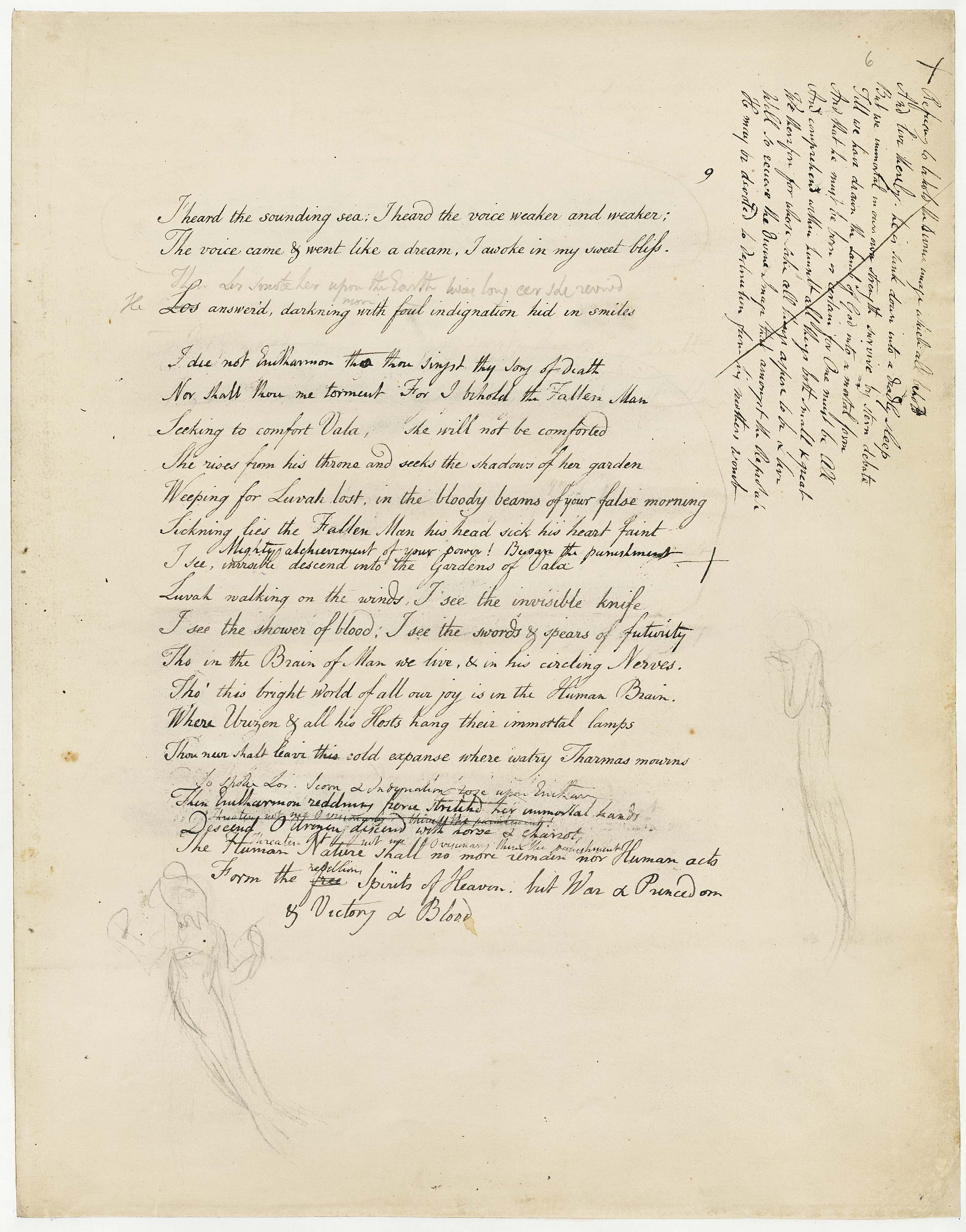We’ve blogged a few times about our progress with the Four Zoas encoding project, mostly recounting our efforts to develop a more flexible and dynamic schema as well as create an experimental display that takes advantage of our new XML elements. This progress has been slow but steady, and after a rigorous round of development focusing on a single difficult object, we’re ready to test our work across more objects and expand the schema to incorporate more textual features.
So as a theatrical monarch once said, “once more unto the breach, dear friends, once more.” Except, I can promise it will be more than just once.
Old Manuscript, New Tricks
With the dual goals of testing and expansion in mind, I chose Object 11 as my next encoding task. Here’s the color-corrected compressed image (click to enlarge):
Object 11 features a relatively clean surface layer with a few tricky revisionary layers that our <stage> element was designed to address. (Check out that mess near the bottom of the page.) Object 11 also gently introduces some new textual features that will require new tags.
First, and most notably, the manuscript contains a large block of text written vertically in the right margin. Laura spent some time at DHSI working on options for these instances of non-standard text orientation. More recently, I also spent some time looking at similar, TEI-inspired options. We came to the same conclusion: we like TEI’s descriptive elements for text directionality that are contained in the section on Characters, Glyphs, and Writing Modes. And although “writing mode” as a descriptor doesn’t maintain the textual, documentary approach of the Blake Archive, the possible values of @style that TEI uses seem to fit pretty well.
Here, let me show you. For the Object 11 example, I could encode the vertical block of text as:
<lg style=”writing-mode: vertical-rl; text-orientation: sideways-right”>
Again, I like the values contained in @style, rather than “style” itself. We’re not trying to describe a style, but rather a physical feature. It’s possible we could change some of the language to better fit our documentary approach, but in any event, the structure is sound and especially helpful.
The second new textual feature contained by Object 11 can be found in the non-linguistic marks around the page, the ones that aren’t drawings or designs. Two of them look like big X’s, the other one is that big slash line through the vertical text block.
These are, presumably, editing and revision marks by Blake intended to identify insertion points and used–but not deleted–text. TEI’s <metamark> seems to fit these instances pretty well, as “any kind of graphic or written signal within a document the function of which is to determine how it should be read rather than forming part of the actual content of the document.”
The bigger question we have is how could encoding these metamarks benefit our display or the reading experience? The documentation we have found so far is thin on examples of transformed metamarks. Metamark seems to live mostly, or only, in the encoding. Our hope is to find an editing project that has made use of the element and chat with them to learn more about the possibilities for display. Because of the textual nature of the Four Zoas manuscript, encoding for metamarks would be a significant undertaking. We must be sure at the outset we have a clear plan for using the element in helpful ways.
Speaking of helpfulness, we’re meeting tomorrow with the library’s DH programmers who are lending their skills to the development of our project. Am I wrong to think that in DH we get spoiled with the abundance of generosity and talent among this group? I’ll close with a PSA to remember your programmers this holiday season! They like cookies and coffee. Lots and lots of coffee.
—



To focus on the most important part of your post, does this mean that there will be cookies at the meeting tomorrow?